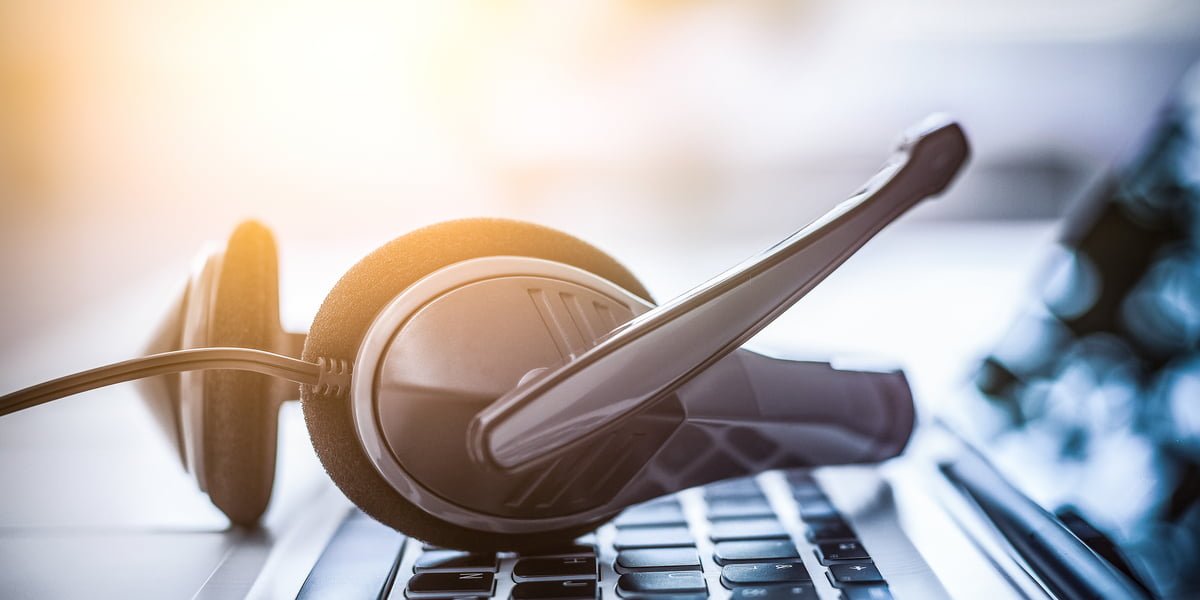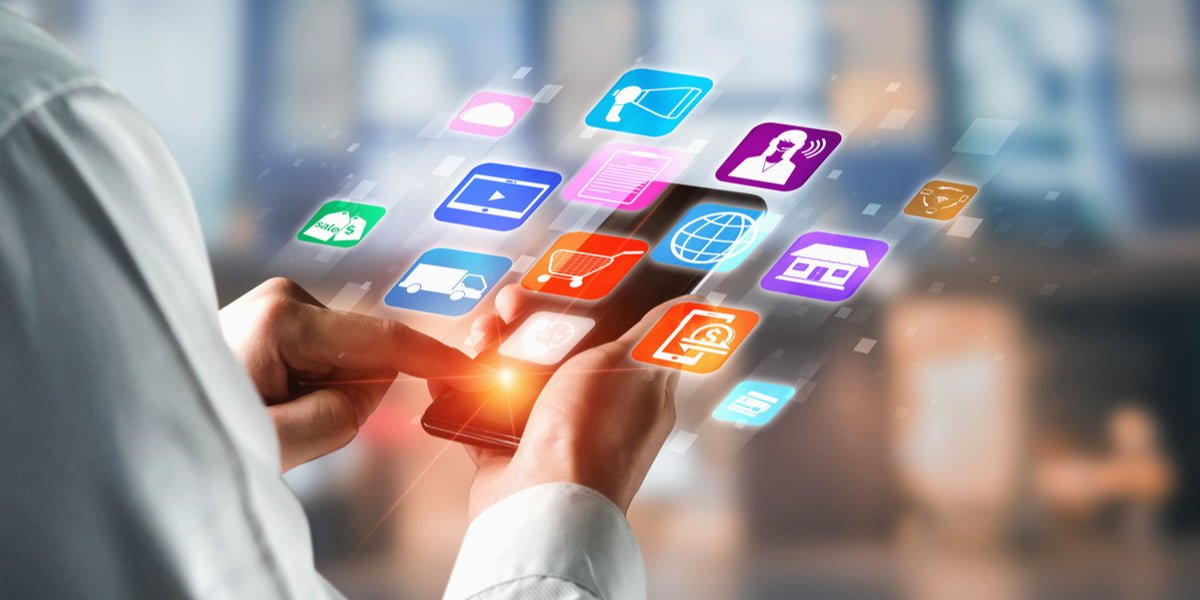Three indispensable KPIs for great customer service
This is a custom heading element.
Your customers deserve phenomenal customer service, of that there is no doubt. But what do you steer on to make sure you can actually deliver that great customer service?
From strategy to operations
Key performance indicators – also called critical or critical performance indicators and often colloquially referred to as KPIs – are variables that make it possible to analyze corporate performance. KPIs are always derivatives of an organization’s strategy and provide an operational tool to monitor daily, weekly, or monthly how your organization is performing, with the goal of being able to improve it. The most important KPIs to keep an eye on if you want to be loved for your great customer service are CSAT, CES, and NPS.
1 Customer satisfaction score (CSAT).
The Customer Satisfaction Score, abbreviated to CSAT, says something about customer satisfaction. Customer satisfaction is an emotion, and emotions are a lot harder to measure than, say, financial KPIs. After all, how do you determine what the value of an emotion is? This is done via a single, scaled CSAT survey with closed-ended questions. Answers can range from Yes/No, a rating on a scale of 1 to 10, 1 to 5 stars, or a scale with values from “strongly agree” to “disagree.
The main advantage of CSAT is that it is a value that is quick and easy to calculate. Because CSAT surveys usually consist of only a single question, the response rate is likely to be high. The simplicity with which the data can be collected makes it easy to track the score on a daily basis. Another advantage is that industry-specific CSAT benchmarks are always available, so you can quickly see how well your organization is doing relative to peers. One disadvantage is that dissatisfied customers may not respond to CSAT surveys, so the results may be biased.
2 Net Promoter Score (NPS)
With the Net Promoter Score, you measure how likely customers are to refer others to you. With this, you are not asking about an emotion, but an intention, and that is directly the major advantage of the NPS over the CSAT. As a result, the answer is less colored. You ask your customers how likely they are to recommend your company, product or service to others. Customers who rate you with a rating of 0 to 6 are the so-called detractors. They are not satisfied and that can damage your reputation. Those who rate you with a 7 or 8 are passive customers. They are not necessarily enthusiastic, but they are not dissatisfied either. The promoters are the customers who give your company, product or service a 9 or 10. They are the coveted loyal customers whose enthusiasm helps you grow. Subtract the percentage of promoters from detractors and that’s your NPS. If you want to put your score in perspective, check out the Net Promoter Network.
3 Customer Effort Score (CES).
This score says something about the ease of use of your products or services. The effort level is measured by asking a question or posing a statement: “Company x made it easy for me to solve my problem,” or “How easy was it to solve your problem? Again, different survey forms can be used. The Likert scale is a 5- or 7-point scale, with values ranging from “totally disagree” to “totally agree. A numeric scale, with values ranging from 1 to 10, can also be used. A third popular scale is a 3-point scale with emoticons: one happy, one neutral and one unhappy.
Because there is no single industry standard to compare against, it is difficult to perform a CES benchmark. Whether the CES value is good also depends on the question you ask and the metrics you use.
Curious?
That ideal customer journey, the optimal customer experience, is the primary factor by which you can differentiate yourself from the competition. It determines the future sustainability and success of an organization, both in the short and long term. Do you also want to stand out in the market? Then contact us without obligation. We will gladly work with you to find the ultimate solution for your customer contact center. Want to get acquainted first? Stay informed by signing up for our newsletter.
Transform the customer experience with a modern IVR
This is a custom heading element.
When you call an organization, you want to be helped quickly and efficiently. Modern means of communication such as chat and Whatsapp help with this, but telephone contact is also still unprecedentedly popular. While that once meant getting stuck in an endless queue, today an IVR provides a completely different experience. What is an IVR and what are its biggest advantages?
Starting at the beginning: what is an IVR?
IVR stands for Interactive Voice Response, also known in proper Dutch as interactive voice response. It is a system that uses a series of menu choices on the phone to connect the caller with the most appropriate employee, or the most optimal self-service option. We all know the examples: “Press 1 to speak to a help desk employee,” or “Press 2 to query your balance. This is how you offer callers a richer customer experience.
Why an IVR?
More and more people choose so-called non-voice channels such as chat and Whatsapp, voice channels should not be missing from a good call center. Speech is simply more popular with older generations and it is also often a godsend for more complex problems.
What are the five biggest benefits of an IVR?
1 Higher FCR rate
By deploying an IVR, call flows are optimally distributed. Thus, the right request reaches the right person and each request is handled as quickly as possible. This allows call centers to reduce waiting times, handle higher call volumes and increase FCR rates.
2 Higher customer and employee satisfaction
An IVR provides a personalized customer journey based on customer profiles. It thus saves customers time and frustration, resulting in more satisfied customers. It also ensures higher satisfaction for employees. After all, they receive only those requests that they can actually handle. This is good for their self-confidence and turns your employees into true ambassadors.
3 Better brand image
Of course, that higher customer satisfaction also creates a better brand image. By treating your customers’ time nicely, ensuring personal interaction and providing more efficient customer service, you create a positive brand image. That, in turn, creates more loyal customers.
4 Real-time customization of the customer journey
With statistics on things like IVR navigation and abandonment rates, it is possible to adjust the customer journey in real time based on those insights and thus improve the customer experience on the fly.
5 Lower costs
Because your staff can work more efficiently, customer cases can be handled in a timely manner. That, in turn, ensures a higher ROI. At the same time, you need less IT support, which in turn reduces operational costs.
The challenge
Very few people enjoy talking to machines. It’s as simple as that. The younger generation can get frustrated by the slowness of phone menus, while for older people it can be too fast again. So it is extremely important to think carefully about the design. Make sure menus are not too long – four choices is the maximum number. Make sure there is no information overkill. Use a professional voice talent so that menus and information are very intelligible. If you pay attention to this, an IVR can be a good addition to your call center strategy. And make sure you use a smart IVR that uses artificial intelligence.
What is a smart IVR?
By deploying a smart, modern IVR, you can shorten menu choices because customers are already recognized based on their phone number, for example. This immediately creates an idea of what the customer is calling about. For example: Customer x has placed an order that is still “pending. That information is known to a company and that can be used to guide the customer through an IVR faster. More importantly: This makes it easier to link the right employee to the customer, who also knows which customer it is and what the question might be about.
Application of artificial intelligence in an IVR
If you further combine such a smart IVR with AI-based speech recognition, a caller can talk to the IVR. Thanks to AI, the customer is recognized, not only the phone number, but also the questions the customer asks and whether the customer is happy, neutral or angry. Important information that can help both the caller and the agent make the call immaculate and hassle-free.
Inspired?
Do you want a call center that is ready for the future? Then contact us without obligation. We will gladly work with you to find the ultimate solution for your organization. Want to get acquainted first? Stay informed by signing up for our newsletter.
Efficient with your time? Nine tips.
This is a custom heading element.
The customer contact center is your company’s business card. It is at least as important as your store counter or reception desk, even if the contact is not physical. By choosing an adequate solution, and streamlining your processes, you will ensure that your customers are satisfied and stay that way. In this blog, we share 9 tips to get your employees working efficiently and effectively.
1 Communicate proactively
Make sure your processes are set up so that you can communicate proactively. That way you can communicate about it even before an outage or delivery problem starts to occur.
2 Be aware of the entire customer journey
The moment a question comes in to the customer contact center, the customer is already halfway through their customer journey. As soon as he or she visits your website, the customer journey has begun, and it doesn’t end until the customer is satisfied with the purchase. Therefore, make sure that you not only manage your employees in handling inquiries and complaints, but that you are involved in all business processes. That way you know exactly what is going to happen, and only in that way can you be proactive.
3 Avoid questions
Therefore, it is also important to keep your customer informed throughout the customer journey. As soon as he or she orders something, the flow of information should start. When will the order be processed? When will the order go with PostNL? This is how you avoid questions.
4 Provide clear steering information
Your team consists of people and they require management. With clear management information you have a tool that helps you do that. Share this management information with your employees, give them insight into the KPIs, the number of complaints handled, the service levels. That way you share the responsibility and they will be even more driven to help the customer quickly and pleasantly.
5 Get the right skills in the right place
Not everyone is a star in every field. Make sure you know where the knowledge and experience of each of your employees is, and make sure the work is distributed as well as possible. By using your people to their strengths, you will not only have happier employees, but you will also ensure happier customers.
6 Plan
Working efficiently starts with planning. When do you deploy which employee with which skills, at what time, on which parts? Also make sure that your employees can quickly find any information they might need, so that the quality of your service remains high. With the right application, your employees will know in no time which customer is on the line and what the status of a complaint or order is.
7 Answer all questions
Often several questions are asked in a contact moment, but not always all questions are asked directly. Make sure your people always check for hidden questions that they can answer. Go for the first time fix so the customer doesn’t have to contact you again.
8 Deploy as many channels as possible – and do it well
Make it easy for your customers to contact you by offering them multiple channels. Whether it’s phone, email, chat, Whatsapp or social media channels, make sure your customer can contact you through the channel they feel most comfortable with. Make sure that if you deploy channels, that they work well and that the people behind them can be reached. A good application will help you do that.
9 Choose quality over quantity
Of course you want customer contact to be as quick as possible and cost as little as possible. But never lose sight of quality. Always go for that first-time fix, otherwise you’re going to keep getting questions back and forth. That only costs more time and makes customer satisfaction go down.
Curious?
The ideal customer journey, the optimal customer experience, is the primary factor by which you can differentiate yourself from the competition. By structuring your quality process, you contribute to the future-proofing and success of your organization, both in the short and long term. Do you also want to stand out in the market? Then contact us without obligation. We will gladly work with you to find the ultimate solution for your customer contact center. Want to get acquainted first? Stay informed by signing up for our newsletter.
The call center of the future? Here are the 5 trends
This is a custom heading element.
Hybrid working is the future, including for your customer contact center employees. But there are more trends you need to deal with as a customer contact manager if you want to be ready for the future. In this blog, we list five of them.
1. The rise of the cloud
The cloud is the new normal when it comes to business continuity and performance. The coronavirus outbreak taught us the importance of being able to work anywhere, at any time and on any device. But even if there is another reason why employees cannot – or do not want to – work in the office, work must be able to continue. Wherever your employees get to work, all the information they need must be available. That’s the only way to ensure that both the employee experience and the customer experience are consistent. Flexibility is key, and the cloud is the answer.
2. The shift to a hybrid work environment
The role of the office, and therefore customer contact center, is changing. Office becomes a place where you meet colleagues and supervisors, where you can brainstorm and have personal consultations. If you need to work with concentration, then the home office may be a better place.
3. Optimize the customer experience with artificial intelligence
Customers are increasingly embracing artificial intelligence. Getting an answer from a chatbot is already commonplace for most people. Thanks to AI, some of the customer contact can be automated and the most frequently asked questions can be answered faster than ever. This allows you to help even more customers, reduce wait times and increase customer satisfaction.
4. Omnichannel is a must
We wrote a blog about it before: a strong omnichannel environment creates a retention rate as high as 89 percent. If you don’t have one, it’s only 33 percent. A significant difference. If you want to be ready for the future, having a strong omnichannel environment is crucial.
5. Human empathy as a new driver of customer loyalty
As wonderful as artificial intelligence is, sometimes human contact is necessary. A personal phone call, a Whatsapp or a Messenger message with the right tone can work wonders. But only if your employee has real-time access to a customer’s interaction history across all communication channels can he or she provide your customer with a personalized and seamless experience.
Inspired?
Do you want a call center that is ready for the future? Then contact us without obligation. We will gladly work with you to find the ultimate solution for your organization. Want to get acquainted first? Stay informed by signing up for our newsletter.
Back to basics. What is a help desk?
This is a custom heading element.
With all kinds of new channels, functionalities and different help desk software vendors, you could easily get lost. This sometimes makes choosing a solution that suits you more complex than necessary. Time to go back to basics. What exactly is a help desk and why is it important?
Helping People
In essence, a help desk can mean anything within an organization. Taking a virtual look at Wikipedia, we read that a help desk is a location or person where questions can be asked or faults can be reported or advice can be obtained about a particular product or service. Whether it’s an internal help desk like an IT service desk or an external help desk like customer service, it all revolves around the same basic principle, we read on Zendesk‘s site: helping people and giving them a place where they can go to get help.
Promote loyalty
We all understand that this is important, and we know that a help desk promotes customer satisfaction, both internally and externally. After all, if a customer has questions or problems with your product or service, a help desk can help solve those problems and thus promote loyalty. But what do the facts tell us?
A few interesting facts
Zendesk’ s Customer Experience Trends Report, 2020 tells us some great facts about help desk or customer service impact.
- As many as 60 percent of customers say that how quickly they can find a solution to a problem factors into their decision of which company to buy something from.
- Almost the same group – 57 percent – considers customer service so important that it factors into their loyalty to a brand, even more than the actual product or service offering.
- About half of customers say one bad experience is enough to switch to a competitor. With more than one bad experience, that percentage rises as much as 80 percent.
Ideal customer journey
From this we may conclude that a good help desk or customer service makes your customers feel heard. If you can offer him or her a personalized experience in the process, you contribute to the ideal customer journey. If you add to this the fact that an optimal customer experience is the primary factor by which you can distinguish yourself from the competition, you know how big the role of a help desk is.
Inspired?
Do you also want to distinguish yourself optimally in the market? Then contact us without obligation. We will gladly work with you to find the ultimate solution for your customer contact center. Want to get acquainted first? Stay informed by signing up for our newsletter.
Here's how to stay in touch with Millennials and Generation Z
This is a custom heading element.
Customer service is a profession that constantly reinvents itself. It changes, adapts and evolves according to the habits of your customers. Millennials – born between 1980 and 1995 – and Generation Z – born between 1996 and 2015 – occupy a growing place in the economy. With that, integrating WhatsApp into your “customer contact center service strategy is essential.
Growing ability
In early 2020, WhatsApp announced that it had officially passed over two billion users worldwide. And Whatsapp is valued as a communication tool by the youngest generations: the Millennials and Generation Z. A Coldwell Banker Global Luxury study, A Look at Wealth 2019, shows that by 2030, American people from these two generations will have enormous spending power, many times greater than today. Their wealth will increase by a factor of five, thanks to the legacy of their Baby Boomer parents. Reason enough to use WhatsApp in your omnichannel customer service strategy.
The benefits of WhatsApp for customer service
According to another 2019 survey, 72% of respondents feel WhatsApp makes customer contact more informative. Understandable, as WhatsApp allows customers to communicate very directly with a contact center employee. By supplementing traditional channels such as phone, email or SMS with a channel such as Whatsapp – which combines digital interaction with quick handling – companies get closer to their customers. This creates a valuable connection with a target audience accustomed to this fast way of communicating. Not only does Whatsapp offer benefits – such as saving both customers’ and employees’ time, high availability and the ability to connect with customers’ expectations – it is also a way to show that as a company you have a modern mindset.
Integrate WhatsApp into your customer strategy
To easily integrate WhatsApp into your strategy, you must be able to rely on a flexible contact center solution within which you can easily add new communication channels. The omnichannel capability of a customer service center depends on its ability to integrate a wide range of social media channels and instant messaging applications in addition to traditional channels. And if anything ensures an optimal customer experience, it’s when you’re ready on your customer’s favorite channel. Whether that is Facebook, Messenger, Twitter, Instagram, WhatsApp, WeChat, Telegram or TikTok, without a WhatsApp-friendly contact center solution that is also 100% omnichannel, you cannot easily adapt to your customers’ expectations.
A human touch: the key to success
Unlike chatbots, voicebots and other types of bots, it is humans who manage interactions on instant messaging platforms such as WhatsApp. To provide a personalized and seamless experience, an employee must have real-time access to a customer’s interaction history across all communication channels and be able to rely on the flawless integration of CRM data.
Curious?
The ideal customer journey, the optimal customer experience, is the primary factor by which you can differentiate yourself from the competition. By structuring your quality process, you contribute to the future-proofing and success of your organization, both in the short and long term. Do you also want to stand out in the market? Then contact us without obligation. We will gladly work with you to find the ultimate solution for your customer contact center. Want to get acquainted first? Stay informed by signing up for our newsletter.
Lowering Customer Effort Score? Here's how to do it
This is a custom heading element.
The optimal customer experience is the primary factor that allows you to stand out from the competition. Your Customer Effort Score is an important indicator of this. In this blog you will read how to lower your CES and optimize your customer satisfaction.
What is CES?
The Customer Effort Score is a value, on a scale of one to five, that expresses how much effort customers have to put in to get something done as your customer. How much energy does it take to reach customer service and ask a question? And, more importantly, getting that question answered. The higher the score, the more effort the customer has to put in. And that doesn’t exactly have a positive effect on the customer experience.
How does CES work?
You measure such a Customer Effort Score by simply asking customers how much energy they had to put into getting their question answered. But just a score, of course, doesn’t tell you enough. Knowing that a customer is not satisfied is one thing. By asking why someone experienced so much effort after the CES question, you gain insight. And thanks to that insight, you can improve your processes.
How do you lower CES?
According to Stichting KIRC, the knowledge institute for customer interaction in the Netherlands and Belgium, the FCR – First Contact Right or First Call Resolution, also known as First Time Fix or First Time Right – has a direct effect on customer satisfaction. By focusing on the FCR, you can bring down the CES. And increasing your FCR again starts with … insight. We wrote a blog about that earlier. A good reporting system gives you insight into how your employees are performing, but you also know how many conversations there were on a particular topic and whether they were positive or negative conversations.
Efficient customer contact environment
But an efficient customer contact environment brings you more. Because your employees have easy access to customer history, they know immediately who they are in contact with, and your customer feels recognized and known – regardless of which employee is on the line and which channel they are using. Even better, your employee can even proactively engage with your customer. For example, are you expecting a delayed delivery? By proactively approaching your customers, you manage expectations and turn a negative message into a positive experience. If you see customer contact as a continuous process consisting of a communication layer, a handling layer and a control layer, you create a 360-degree customer view and you can offer an even better experience to every customer, now and in the future. And that is guaranteed to have a – positive – impact on your Customer Effort Score.
Curious?
By structuring your quality process, you contribute to the future-proofing and success of your organization, both in the short and long term. Do you also want to stand out in the market? Then contact us without obligation. We will gladly work with you to find the ultimate solution for your customer contact center. Want to get acquainted first? Stay informed by signing up for our newsletter.
Omnichannel anno 2021, here's what you need to know
This is a custom heading element.
Companies with a strong omnichannel environment achieve retention rates as high as 89 percent. For organizations that do not have this, the rate is only 33 percent. So having a strong omnichannel environment is crucial today. What do you need to know?
Seamless conversation
In many companies, customer contact is about answering emails, phone calls and Whatsapp messages or handling a ticket. In a future-proof customer contact environment, it is no longer about channels or tickets, but a seamless conversation with the customer regardless of time, location or channel. For example, a customer makes the initial contact by phone, then the conversation continues by email to finally send another question via WhatsApp. All channels are aligned and the customer journey is optimal.
Four points of interest
A flawless omnichannel experience has four focal points.
1. Automate
Thanks to artificial intelligence, some of the customer contact can be automated. A smart chatbot can already answer the most frequently asked questions and determine when to enlist the help of an agent. This allows you to support more customers, shorten wait times and increase customer satisfaction.
2. Picking up conversation again
Sometimes the conversation falls silent for a while. When a customer then contacts you again, it is important that he or she does not have to answer all kinds of questions again, but that the conversation picks up where it left off.
3. Additional human contact
Sometimes human attention is indispensable and a phone call from person to person offers the only right solution. How do you handle this in the most customer-friendly and efficient way?
4. Be future-proof
The future is unpredictable. It is important to make sure you are ready for integrations with solutions other than your current customer service software.
Zendesk messaging
Zendesk messaging is a new tool that enables a flawless omnichannel experience. With Zendesk messaging, you move away from communicating through different channels and move to a fluid conversation that always continues to flow consistently.
Want to know more?
In September, we will host a webinar demonstrating to you what such an omnichannel environment within Zendesk can look like. Our colleagues will recreate a complete demo environment in Zendesk and let you experience how such a seamless customer conversation works. Interested? Then sign up for our newsletter at the bottom of this page and stay informed. Want to know more now? Then contact us without obligation. We’d love to get to know you.
Customer contact in a hybrid work environment? No problem!
This is a custom heading element.
Working from home is here to stay, but the office also continues to play a major role. As a customer contact manager, how do you deal with such a hybrid work situation?
Finally that chat at the coffee machine again
We can finally go back to the office! OK, this is only allowed for a maximum of half of the working hours , and while maintaining the one and a half meter, but it is already quite something. Research by Ruigrok NetPanel commissioned by mobility organization Toogethr shows that as many as 75 percent of employees miss spontaneous contact and face-to-face meetings with colleagues. Just under three-quarters say they also miss the “live” consultation with their manager. But as happy as we are again with that chat at the coffee machine, working from home will never completely disappear. Did we go to the office about 4.1 days a week pre-corona, the expectation is that, now that it is allowed again, we will spend only 2.8 days a week in the office. Over 75 percent consider the elimination of travel time the biggest advantage. But we also find it pleasant to be able to arrange our own working hours and do some household chores in between.
Hybrid working is the future
So we are not going back to the world as it was before corona. Most employees prefer a hybrid form of work. Having that freedom of choice makes for a better work-life balance. According to the Gensler Workplace Surveys 2020 , that in turn makes for happier employees. So the role of the office – and by extension, the customer contact center – is changing. The office will become the preferred place for meetings with colleagues and executives, creative processes and large consultations. The choice will fall to the home office when work needs to be done that requires a lot of concentration, such as writing a report or making calls to customers.
Equally efficient and effective everywhere
Even for your customer contact center employees, it doesn’t matter today where they do their work, whether it’s at home or in the office, they can work anywhere. As long as you make sure they use a secure cloud solution and central monitoring . In a previous blog, we already gave you nine tips for getting your employees to work efficiently and effectively . But where that is no longer matters. The customer doesn’t care where your employees are, as long as he or she is helped out of a jam. Your employees can also be reached from home, SLAs can be met and you can make excellent preparations for physical meetings. Even if someone cannot be at a physical meeting, that is no problem: you just dial in to the meeting room where your colleagues are physically together. Something positive came out of the corona pandemic after all.
Curious?
The ideal customer journey, the optimal customer experience, is the primary factor by which you can differentiate yourself from the competition. By structuring your quality process, you contribute to the future-proofing and success of your organization, both in the short and long term. Do you also want to stand out in the market? Then contact us without obligation. We will gladly work with you to find the ultimate solution for your customer contact center. Want to get acquainted first? Stay informed by signing up for our newsletter.
10 features for choosing your contact center solution
ContactCenterLive
Nowadays, it is well known that customer service management is as important as the quality of the products and services provided by the brand. A HubSpot study showed that 93% of customers are more likely to buy products from brands that provide quality customer service. In addition, according to data from the 2020 BVA Customer Service Observatory, 74% of consumers are willing to spend more or show higher loyalty when providing a positive customer service experience. In order to provide high-quality customer service, the company must be equipped with a reliable and powerful contact center solution (or call center solution) to handle all incoming and outgoing contacts with potential customers or customers. The following are 10 basic characteristics of a good contact center.
Interactive Voice Response (IVR)
The idea behind IVR is simple: it allows incoming customers to choose among many options based on different types of requests. It’s the famous:
- To know your balance, press 1
- To speak with an agent, press 2
- etc
Interactive voice response is an important function to ensure 24/7 phone reception. It defines the reason for the call in order to guide your potential customers and customers to the best waiting queue and allows agents to personalize their answers. IVR also supports activity peak management and promotes self-service: simple requests can be handled by the customer themselves-such as checking their balance or paying bills-without agent assistance, allowing agents to dedicate their time to more complex requests.
Automatic Call Distribution (ACD)
Intelligent routing by skill routes inbound calls directly to the most qualified agent available. Whether based on the spoken language, expertise, or specific product, the call will be directed to the agent most capable of providing a clear and quick response. As a result, ACD greatly reduces the waiting time for each incoming call, and improves customer satisfaction and productivity.
Omnichannel strategy
The digitization of customer service, which will be greatly accelerated in 2020, now requires new customer service channels. Although customers still prefer phone calls and emails, they also contact brands through other communication channels such as text messages, web forms, chat, instant messaging, and social media. Therefore, your contact center solution must be omni-channel, and all customer service channels must be centralized in one interface. In this way, your agents will have a 360° view of customer history and interactions, and can unify communication across all channels.
CRM integration
In order to quickly identify customers and provide them with personalized answers, your call center solution must be easily integrated with your CRM (customer relationship management) or your industry tools (ticketing system, service desk, payment system). Quickly identifying customers or enriching your customer data in your IVR is one of many options for integrating CRM and contact center solutions to ensure the quality of your customer service.
Automatic pop-up files
The pop-up file (or customer file pop-up window) allows your team to take advantage of all necessary customer information before answering the call. This feature is achieved by integrating the call center solution with CRM, and it is possible to personalize each conversation with the customer and the response of the agent. It can record customer accounts, display customer history, and view previous interactions to provide personalized customer service.
In the cloud or on-premise
According to Gartner, between now and 2024, contact center spending on the cloud will account for 88% of the investment. The widespread adoption of remote work has greatly accelerated this cloud migration, and it is particularly suited to the company’s need for flexibility. If your team works across multiple sites, or if you need to adjust resources based on current events, you need a cloud contact center solution. On the other hand, if you need to integrate the call center with the old information system or carry out specific development, an on-premises solution will be more suitable.
Outbound call dialer
The outbound call dialer allows you to automatically make calls from a predetermined list of phone numbers-from CRM or directly loaded into the call center solution. It usually provides three dialing modes: preview, progressive and predictive. It is essential for teleprospecting, web lead callbacks, order follow-ups, bill reminders, meeting reminders, and satisfaction surveys. It allows you to choose a calling strategy to maximize the reach of your contacts. A powerful auto dialer is an important tool to increase agent productivity and successfully carry out activities.
Call recording
Call recording allows you to save phone conversations between your team and your customers or prospects for later listening. This feature is essential for agent training. While struggling to provide quality service, listening to their calls allows them to determine where to progress, possible obstacles, and reasons for customer dissatisfaction. In the case of a lawsuit with a client, the answering phone can also be used for legal purposes.
Real-time supervision
In order to supervise the overall activities of the call center, real-time supervision is an essential function. With a customizable dashboard available in real time, your supervisor can access all key indicators at a glance, enabling them to make quick decisions: agent online, customer waiting, agent available or resting, etc. Other monitoring techniques-careful listening, whispering, meetings, internal chat-allow agents to improve efficiency and performance.
Reporting
Average response time, AHT (Average Handeling Time), FCR (First Contact Resolution Rate), CRR (Customer Retention Rate) and Average Pickup Rate are one of many key performance indicators that represent customer quality. In order to optimize your KPIs, rich reports are an important asset for monitoring customer satisfaction and must be an important factor to consider when choosing a call center solution.
Which call center solution should you choose?
In order to optimize customer satisfaction and provide quality customer service, Contact Center Live provides an intuitive and flexible call center solution that can meet your needs. Our all-in-one cloud solution provides you with all the keys to providing perfect customer service on all interactive channels and increasing the impact of outbound activities.
Source: Vocalcom









